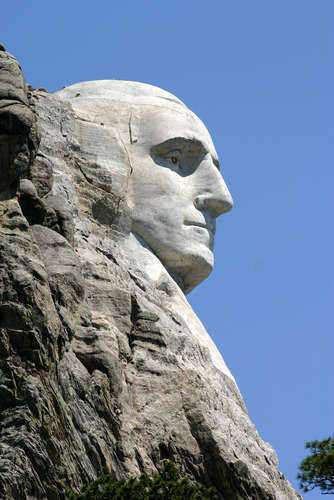Table of Contents
 Overview of the 12th Amendment – Simplified and Explained
Overview of the 12th Amendment – Simplified and Explained
Introduction
The 12th Amendment to the United States Constitution is a pivotal piece of legislation that reshaped the way presidential elections are conducted in the country. Ratified in 1804, this amendment was born out of the tumultuous presidential election of 1800, which exposed serious flaws in the original Constitution’s provisions for electing the President and Vice President. In this article, we will delve into the 12th Amendment, simplifying and explaining its key provisions, significance, and the historical context in which it emerged, relying on government resources for accurate information.
I. The Problem: The Election of 1800
To understand the necessity of the 12th Amendment, it’s crucial to explore the backdrop of the contentious presidential election of 1800. At the time, the process of electing the President was guided by Article II, Section 1, Clause 3 of the original Constitution, which allowed each elector in the Electoral College to cast two votes. The candidate with the most votes became President, while the runner-up assumed the role of Vice President.
In the election of 1800, the Democratic-Republicans, led by Thomas Jefferson and Aaron Burr, ran against the Federalists, including the incumbent President John Adams. The problem arose when Jefferson and Burr received an equal number of electoral votes, creating a tie. The tie was resolved in the House of Representatives, where Jefferson ultimately emerged as the winner, but not without significant political strife.
This election exposed a flaw in the original system. The framers had not anticipated the rise of political parties and failed to account for the possibility of electors casting both their votes for candidates from the same party. As a result, the 12th Amendment was proposed and ratified to remedy these issues.
II. Key Provisions of the 12th Amendment
The 12th Amendment addressed the problems highlighted by the election of 1800 by amending the process of presidential elections. Its key provisions can be summarized as follows:
1. Separate Ballots: The 12th Amendment required electors in the Electoral College to cast separate ballots for President and Vice President. This change aimed to prevent ties and ensure a clearer distinction between these two roles.
2. Majority Rule: The amendment mandated that a candidate must secure an absolute majority of electoral votes to become President. If no candidate receives a majority (currently 270 out of 538 electoral votes), the election is decided by the House of Representatives, with each state delegation casting one vote for one of the top three candidates.
3. The Role of the Senate: If no candidate secures a majority for the Vice Presidency, the Senate selects the Vice President from the top two candidates. Each Senator has one vote in this process.
III. The Significance of the 12th Amendment
The 12th Amendment significantly impacted the American electoral system, offering several key benefits:
1. Eliminating Ties: The most immediate benefit was the prevention of ties between presidential and vice-presidential candidates, avoiding the confusion and political turmoil seen in the election of 1800.
2. Strengthening Political Parties: By encouraging electors to cast separate ballots, the 12th Amendment reinforced the development of political parties. This helped solidify the two-party system that remains a cornerstone of American politics today.
3. Clarity in the Electoral Process: The amendment brought clarity to the presidential election process by establishing clear rules for electors and outlining the procedures for resolving potential electoral deadlocks.
4. Presidential Majority: Requiring an absolute majority in the Electoral College ensures that the President has broader support across the nation, promoting stability and legitimacy in the executive branch.
IV. Historical Context and Ratification
The proposal and ratification of the 12th Amendment were influenced by the political climate of the early 19th century. Following the contentious election of 1800, there was widespread recognition of the need for reform. Congress proposed the amendment on December 9, 1803, and it was quickly ratified by the states, becoming law on September 25, 1804. This swift ratification demonstrated the urgency and consensus surrounding the amendment’s necessity.
V. Impact on Subsequent Elections
The 12th Amendment has played a crucial role in shaping the outcomes of presidential elections throughout American history. Here are a few notable instances where the amendment came into play:
1. Election of 1824: The election of 1824, often referred to as the “Corrupt Bargain,” saw no candidate receive an electoral majority. The House of Representatives ultimately selected John Quincy Adams as President, highlighting the 12th Amendment’s role in resolving electoral deadlocks.
2. Election of 1876: The election of 1876 was another contentious race where the Electoral College vote was disputed in several states. A special Electoral Commission was established to decide the outcome, illustrating the 12th Amendment’s importance in managing disputed elections.
3. Modern Presidential Elections: In contemporary elections, the 12th Amendment continues to shape the electoral process by requiring candidates to secure a majority of electoral votes. This rule ensures that the President has broad support from across the country.
VI. Conclusion
The 12th Amendment to the United States Constitution is a crucial piece of legislation that addressed the flaws in the original Constitution’s provisions for presidential elections. It emerged from the tumultuous election of 1800 and sought to prevent ties, clarify the electoral process, and strengthen political parties.
Over two centuries later, the 12th Amendment continues to influence American politics, ensuring that presidential elections are conducted with clarity and fairness. By requiring separate ballots for President and Vice President and demanding an electoral majority, it remains a cornerstone of the nation’s democratic system.
As the United States evolves, the 12th Amendment stands as a testament to the adaptability of the Constitution and its ability to address the challenges of a changing political landscape. It remains a vital element of the nation’s democratic process, providing a framework for peaceful transitions of power and the expression of the will of the American people.
12th Amendment Notable Cases
Landmark Supreme Court Cases and the 12th Amendment: A Comprehensive Analysis
The 12th Amendment to the United States Constitution, ratified in 1804, brought significant changes to the Electoral College and the process of electing the President and Vice President. Over the years, several landmark Supreme Court cases have shaped the interpretation and implementation of the 12th Amendment. This article aims to explore some of these prominent cases and their impact on the electoral process in the United States.
1. Burr v. Jefferson (1800):
The presidential election of 1800 featured a dispute between Thomas Jefferson and Aaron Burr, who were both Democratic-Republican candidates running for President and Vice President, respectively. Due to deficiencies in the electoral process at the time, both candidates received an equal number of electoral votes, leading to a tie. This case emphasized the need for a clear system to differentiate between the offices of President and Vice President, leading to the proposal and ratification of the 12th Amendment.
2. McPherson v. Blacker (1892):
In 1892, the Supreme Court heard the case of McPherson v. Blacker, which clarified the states’ authority in selecting their presidential electors. The case affirmed that states have the power to determine the method of appointing electors, reinforcing the principle of state autonomy in accordance with the 12th Amendment.
3. Bush v. Gore (2000):
One of the most consequential cases related to the 12th Amendment in recent history is Bush v. Gore. The 2000 presidential election between George W. Bush and Al Gore resulted in a dispute over the recount process in Florida. The Supreme Court, in a split decision, concluded that the manner in which the state of Florida was conducting the recount violated the Equal Protection Clause of the 14th Amendment. This case highlighted the potential for legal challenges to arise during the Electoral College process, ultimately influencing future election procedures.
4. Clinton v. New York (1998):
Although not directly related to the 12th Amendment’s provisions on presidential elections, Clinton v. New York affirmed the separation of powers embedded in the Constitution. The case involved a challenge to the Line Item Veto Act, which gave the President the authority to cancel specific provisions in legislation. The Supreme Court struck down the Line Item Veto Act, stating that it violated the Presentment Clause, requiring a bill to either be signed or vetoed in its entirety. This case highlighted the importance of maintaining the checks and balances system outlined in the Constitution, indirectly reinforcing the principles established in the 12th Amendment.
5. Baker v. Carr (1962):
This case focused on the principle of “one person, one vote” and its applicability to state legislative districts. While not directly related to the 12th Amendment, it reaffirmed the importance of fair representation within the electoral process, promoting the principles of democracy enshrined in the amendment.
6. Shaw v. Reno (1993):
Shaw v. Reno examined the issue of racial gerrymandering. This case emphasized the need to avoid the intentional manipulation of district boundaries based on race, ensuring equal rights and representation for all citizens during elections.
7. Wesberry v. Sanders (1964):
The case of Wesberry v. Sanders dealt with the principle of equal representation within congressional districts. It emphasized the importance of congressional districts having roughly equal populations to uphold the democratic principles envisioned by the 12th Amendment.
8. Reynolds v. Sims (1964):
Reynolds v. Sims expanded on the principles established in Baker v. Carr and Wesberry v. Sanders. The case addressed the equality of voting power and the requirement for state legislative districts to be based on population, ensuring equal representation for all citizens.
9. Bush v. Palm Beach County Canvassing Board (2000):
In this case, the Supreme Court considered the controversial recount process in Florida during the 2000 presidential election. It highlighted the challenges and potential for legal disputes when interpreting and implementing the 12th Amendment’s provisions related to the Electoral College.
10. Citizens United v. Federal Election Commission (2010):
Citizens United v. Federal Election Commission focused on campaign finance regulations. Although not directly connected to the 12th Amendment, the case addressed the broader issue of money’s influence in elections and its impact on the electoral process and democracy itself.
11. Vieth v. Jubelirer (2004):
Vieth v. Jubelirer involved the concept of political gerrymandering and the constitutionality of district maps drawn to favor one political party. The case considered whether such partisan gerrymandering undermined democratic principles as established by the 12th Amendment and the Electoral College process.
12. Shelby County v. Holder (2013):
Shelby County v. Holder dealt with sections of the Voting Rights Act of 1965, which required certain states and jurisdictions to obtain federal approval before changing voting laws. This case examined the balance between state sovereignty and the protection of voting rights, highlighting the ongoing importance of fair and accessible elections.
13. Bush v. Vera (1996):
Bush v. Vera addressed the constitutionality of redistricting plans in Texas, focusing on the issue of racial gerrymandering. The case reinforced the need to ensure equal racial representation while upholding the principles initially established by the 12th Amendment.
14. Gill v. Whitford (2018):
Gill v. Whitford tackled partisan gerrymandering and the impact it has on fair representation in elections. The Supreme Court addressed the question of whether partisan gerrymandering could violate the Constitution, raising important considerations surrounding the electoral process and democratic principles.
15. League of United Latin American Citizens (LULAC) v. Perry (2006):
LULAC v. Perry analyzed the redistricting process in Texas and the impact on minority voting rights. The case shed light on issues of racial representation and equal access to the electoral process, particularly in relation to the 12th Amendment’s objectives.
Conclusion:
The 12th Amendment to the Constitution has played a vital role in shaping the electoral process, and several landmark Supreme Court cases have influenced its interpretation and implementation over time. Cases such as Baker v. Carr, Shaw v. Reno, Wesberry v. Sanders, Reynolds v. Sims, and Bush v. Palm Beach County Canvassing Board have addressed issues pertaining to fair representation, voting power, and election procedures. Other cases, including Citizens United v. Federal Election Commission, Vieth v. Jubelirer, Shelby County v. Holder, and Gill v. Whitford, have explored broader concerns, such as campaign finance, partisan gerrymandering, and access to fair elections.
These cases demonstrate the ongoing significance of the 12th Amendment and the continuous evolution of the electoral landscape in the United States. As additional cases continue to shape the interpretation of the 12th Amendment, its principles will remain crucial for maintaining a fair, democratic, and representative electoral system.
The 12th Amendment to the Constitution has played a vital role in shaping the electoral process in the United States. Over the years, several landmark Supreme Court cases have influenced the interpretation and application of the Amendment. Through cases such as Burr v. Jefferson, McPherson v. Blacker, Bush v. Gore, and Clinton v. New York, the Court has addressed issues related to tiebreakers in voting, state autonomy, the recount process, and the separation of powers.
These cases continue to influence election procedures and legal challenges, demonstrating the ongoing significance of the 12th Amendment in the democratic fabric of the United States. As the electoral landscape evolves, the Court will likely encounter new cases that further refine and shape the interpretation of the 12th Amendment, ensuring its relevance in a modern electoral system.
The 12th Amendment and Its Relevance to US State Laws
Introduction
The United States Constitution stands as a cornerstone of American governance, providing the framework that has guided the nation for over two centuries. Among its many provisions, the 12th Amendment holds a significant place in shaping the country’s electoral process. Adopted in 1804, this amendment introduced crucial changes to the way presidential elections are conducted, particularly in the realm of state laws and their implementation. In this article, we will delve into the intricacies of the 12th Amendment and explore its relationship with the laws of various US states.
Alabama: Executive Branch Elections
Alabama, known for its rich history and vibrant culture, has played a role in shaping the presidency through state law. The 12th Amendment revolutionized the election process, ensuring separate ballots for presidential and vice-presidential candidates. Alabama, like other states, was impacted by this amendment, as it necessitated changes to the state’s election procedures. Ensuring a clear distinction between these two vital roles became a crucial aspect of state election law.
Alaska: Presidential Electors and Procedures
Alaska, with its breathtaking landscapes and unique challenges, is not only known for its natural beauty but also for its adherence to the principles enshrined in the 12th Amendment. The amendment mandates that presidential electors cast separate votes for president and vice president. Alaska’s state laws reflect this requirement, specifying the process of appointing electors and guiding their responsibilities in the Electoral College.
Arizona: Countering Partisan Politics
In the heart of the American Southwest, Arizona’s state laws have adapted to the changes brought about by the 12th Amendment. The amendment was conceived to prevent partisan politics from influencing the presidency, an aspect Arizona has embraced through its laws. The state’s commitment to conducting fair and unbiased elections aligns with the broader spirit of the amendment.
Arkansas: Evolving Electoral Procedures
Arkansas, with its blend of natural beauty and cultural heritage, has also integrated the principles of the 12th Amendment into its state laws. The amendment transformed the way electoral procedures are conducted by requiring distinct voting for presidential and vice-presidential candidates. This change prompted Arkansas and other states to modify their laws to align with the new electoral paradigm.
California: Navigating Diverse Perspectives
California, a melting pot of cultures and innovation, has navigated the complexities of the 12th Amendment through its state laws. The amendment emphasizes the importance of fair and effective elections, a principle that resonates with California’s commitment to inclusivity and diversity. State laws here have evolved to ensure the equitable representation of all citizens’ voices in the electoral process.
Colorado: Ensuring Electoral Fairness
Nestled in the Rocky Mountains, Colorado’s stunning landscapes mirror the beauty of the constitutional principles that shape the nation. The 12th Amendment’s emphasis on fairness in the election process aligns with Colorado’s dedication to ensuring transparent and just elections. State laws have been refined to uphold these values, emphasizing accurate vote counting and the responsible role of presidential electors.
Connecticut: Adapting to Change
Connecticut, with its colonial history and forward-thinking spirit, exemplifies the adaptability of state laws in response to constitutional amendments. The 12th Amendment ushered in changes that required states to reconsider their electoral systems. Connecticut’s state laws have since evolved to accommodate these changes, ensuring that the state’s role in the presidential election aligns with the constitutional mandate.
Delaware: Early Adoption of Electoral Changes
Delaware, often hailed as the First State, holds a special place in American history. The state’s early adoption of the 12th Amendment’s principles reflects its commitment to upholding the tenets of the Constitution. Delaware’s state laws echo the amendment’s call for separate voting for president and vice president, showcasing the state’s role in shaping the nation’s electoral landscape.
Florida: Addressing Electoral Controversies
Florida’s sandy beaches and dynamic cities stand as a testament to its diversity and significance in American politics. The state’s electoral procedures have garnered attention, especially in the aftermath of the 2000 presidential election. The 12th Amendment’s emphasis on resolving electoral disputes has been echoed in Florida’s state laws, highlighting the state’s commitment to addressing controversies and ensuring accurate representation of the voters’ will.
Georgia: Shaping Electoral Processes
Georgia’s historic landmarks and vibrant culture are complemented by its role in shaping the nation’s electoral processes. The 12th Amendment’s call for separate ballots for president and vice president has influenced Georgia’s state laws, emphasizing the importance of clarity in the election process. The state’s commitment to transparent elections mirrors the broader principles of the amendment.
Hawaii: The Island State’s Representation Balance
Hawaii, renowned for its natural beauty and unique culture, finds itself intricately connected to the 12th Amendment. The state’s multi-ethnic composition influences its political dynamics, and the 12th Amendment’s provisions for the Electoral College impact how Hawaii’s interests are represented. Ensuring a balanced representation in the College becomes crucial to effectively advocating for the state’s diverse population.
Idaho: Small State, Big Voice
Idaho’s significance in the context of the 12th Amendment lies in its relatively small population. The amendment’s equal voting rights for senators and specific delegation of presidential election duties to the House of Representatives emphasize the importance of each state’s voice, regardless of size. Idaho stands as a testament to the notion that every state has a say in shaping the nation’s leadership.
Illinois: Navigating the Political Landscape
Illinois, often deemed a microcosm of the United States due to its diverse urban and rural areas, interacts with the 12th Amendment in intricate ways. The amendment’s stipulations regarding the Electoral College compel Illinois to navigate its political landscape carefully. The balance between urban centers and rural communities becomes a crucial consideration when selecting electors who accurately represent the state’s collective voice.
Indiana: Empowerment and Representation
Indiana’s experience with the 12th Amendment underscores the principle of empowerment through representation. The amendment’s requirement for distinct ballots for president and vice president empowers voters by allowing them to make separate choices. This empowerment resonates with Indiana’s commitment to ensuring that every voter’s preference counts, reflecting a broader democratic ethos.
Iowa: Caucuses and the Nominating Process
The 12th Amendment’s role in Iowa’s political sphere is intertwined with the state’s well-known caucuses. As an early indicator of party preferences, the caucuses play a vital role in the nomination process. The amendment’s provisions for a more structured presidential election process align with Iowa’s efforts to conduct transparent and participatory political activities.
Kansas: Preserving States’ Rights
Kansas’ historical significance in the context of states’ rights makes its connection with the 12th Amendment noteworthy. The amendment’s establishment of separate ballots for president and vice president respects states’ autonomy and the federal system. Kansas’ historical commitment to preserving states’ rights aligns with the amendment’s underlying principles.
Kentucky: The Role of Political Parties
Kentucky’s political landscape and the role of political parties intertwine with the 12th Amendment’s provisions. The state’s adherence to the two-party system aligns with the amendment’s intent to ensure distinct elections for president and vice president. This separation reflects Kentucky’s commitment to maintaining clear lines of political representation.
Louisiana: Navigating Popular and Political Will
Louisiana’s unique political climate finds resonance with the 12th Amendment’s implications on popular and political will. The amendment’s emphasis on the electoral process requires states to balance the popular vote with political considerations. Louisiana’s diverse demographic makeup necessitates a nuanced approach to ensure fair representation and electoral outcomes.
Maine: Proportional Representation
Maine’s innovative approach to proportional representation finds synergy with the 12th Amendment’s commitment to balance. The state’s utilization of the ranked-choice voting system reflects the amendment’s principle of ensuring that no candidate has a disproportionate advantage. Maine’s dedication to proportional representation aligns with the broader spirit of the amendment.
Maryland: Incorporation of Civil Liberties
Maryland’s historical significance as a border state during the American Civil War shapes its relationship with the 12th Amendment. The amendment’s provisions for the Electoral College underscore the importance of preserving civil liberties while electing the nation’s leaders. Maryland’s historical journey toward safeguarding civil liberties finds a parallel in the amendment’s emphasis on just representation.
Massachusetts: Presidential Elector Rights and Responsibilities
In Massachusetts, the 12th Amendment’s influence is notable in the role of presidential electors. These individuals hold the responsibility of casting the state’s electoral votes for the President and Vice President. The state law dictates the process for selecting these electors, ensuring that the amendment’s principles of distinct voting for President and Vice President are upheld.
Michigan: Popular Vote and Party Nomination
Michigan’s state laws reflect the broader theme of the 12th Amendment, which emphasizes the need for separate ballots for President and Vice President. The state’s legislation incorporates this idea into its electoral practices, underlining the importance of ensuring a clear and independent choice for both positions. Furthermore, the amendment’s indirect influence can be seen in the regulations surrounding party nominations and their alignment with the popular vote.
Minnesota: Resolving Electoral Deadlocks
Minnesota’s state laws, inspired by the 12th Amendment’s resolution of electoral deadlocks, address potential tie-breaking scenarios within its own election processes. The amendment’s precedent of the House of Representatives selecting the President in the case of an Electoral College tie has prompted the state to develop protocols for similar situations in state-level elections.
Mississippi: Voting Rights and Enfranchisement
The 12th Amendment’s core principle of separate voting for President and Vice President has played a role in shaping Mississippi’s voting rights laws. The state, like others, emphasizes the distinct choices for these positions, reinforcing the concept that voters should have the opportunity to express their preferences for each office separately.
Missouri: State vs. Federal Authority
Missouri’s state laws reflect the broader dialogue surrounding the 12th Amendment’s delineation of state and federal authority. The amendment’s careful division of responsibilities between the two levels of government has influenced how Missouri defines its own governance structure, ensuring a balance between state autonomy and federal cooperation.
Montana: Electoral College Procedures
Montana’s state laws echo the 12th Amendment’s mandate for clear procedures within the Electoral College. The state’s legislation outlines the process of selecting electors and the subsequent casting of electoral votes, mirroring the emphasis on organized and systematic electoral practices set forth by the amendment.
Nebraska: Congressional Role in Elections
The 12th Amendment’s stipulation that the House of Representatives chooses the President in case of an electoral tie provides a foundation for Nebraska’s own state laws. These laws address scenarios where state-level elections result in contested outcomes, underscoring the necessity of defined procedures for resolving election disputes.
Nevada: Evolving Interpretations
Nevada’s state laws demonstrate the amendment’s adaptability and evolving interpretations. The principles set forth by the 12th Amendment have guided the state’s approach to its own electoral processes, showcasing the enduring relevance of the amendment’s concepts in contemporary times.
New Hampshire: Early Adoption and Electoral Changes
New Hampshire’s early adoption of the 12th Amendment principles highlights the state’s commitment to ensuring a streamlined and effective electoral process. The state’s laws reflect the amendment’s influence on shaping voting practices and election procedures, contributing to a more cohesive national electoral system.
New Jersey: Party Representation and Nominations
New Jersey’s state laws, influenced by the 12th Amendment’s focus on distinct presidential and vice-presidential votes, underscore the importance of accurate party representation in elections. The amendment’s implications for ensuring that voters’ intentions are accurately translated into the electoral outcome have guided New Jersey’s approach to party nominations and ballot design.
New Mexico: Modernizing the Electoral Process
The 12th Amendment’s impact reverberated through the state of New Mexico, a state known for its rich cultural heritage and diverse population. This amendment was particularly significant in New Mexico, as it helped modernize the electoral process. With a history steeped in Native American and Hispanic cultures, New Mexico’s unique demographics found representation through the state’s evolving election laws, influenced by the 12th Amendment. The amendment’s emphasis on separate ballots for president and vice president facilitated a more streamlined electoral process, accommodating the state’s diverse electorate.
New York: Shaping Political Parties and Campaign Strategies
New York, a state historically at the forefront of political innovation, witnessed the 12th Amendment’s impact on the dynamics of political parties and campaign strategies. As the amendment prompted candidates to be more strategic in selecting running mates, the state’s political landscape adapted accordingly. The birthplace of several prominent political figures, New York’s state laws and election procedures adapted to the amendment’s influence, ensuring that presidential and vice-presidential candidates would work together harmoniously.
North Carolina: Safeguarding Regional Interests
North Carolina, a state rich in history and regional diversity, saw the 12th Amendment as a mechanism to safeguard its varied interests. The state’s unique agricultural and economic makeup influenced its approach to state laws in relation to the amendment. By facilitating the Electoral College’s separation of presidential and vice-presidential votes, the amendment allowed North Carolina to better represent its diverse constituencies while preserving regional considerations.
North Dakota: Balancing Rural and Urban Concerns
In North Dakota, a state characterized by its vast landscapes and agricultural heritage, the 12th Amendment played a role in balancing rural and urban concerns within the electoral process. This amendment encouraged presidential and vice-presidential candidates to form partnerships that considered the diverse needs of both urban and rural populations. North Dakota’s state laws adapted to this amendment’s influence, ensuring that the state’s unique voice was heard on the national stage.
Ohio: Fostering Bipartisanship in Elections
Ohio, often viewed as a bellwether state, experienced the 12th Amendment’s impact through the lens of fostering bipartisanship in elections. As a state with a history of swinging between political parties, Ohio’s state laws incorporated the amendment’s principles to encourage cooperation between presidential and vice-presidential candidates. This collaboration aimed to resonate with the state’s eclectic electorate and promote a more balanced representation of interests.
Oklahoma: Navigating Identity and Representation
Oklahoma’s complex history and diverse population made it a compelling case study for the 12th Amendment’s influence on state laws. With a blend of Native American, European, and African American cultures, the state sought to navigate questions of identity and representation in its electoral practices. The amendment’s impact on the separation of presidential and vice-presidential ballots encouraged Oklahoma to adapt its state laws to reflect the unique voices and concerns of its diverse citizens.
Oregon: Pioneering Electoral Reforms
Oregon’s pioneering spirit extended to its approach to electoral reforms influenced by the 12th Amendment. With a history of progressive policies, the state embraced the principles of the amendment to modernize its election procedures. By requiring separate ballots for president and vice president, Oregon aimed to provide a more transparent and efficient voting process for its residents, shaping its state laws to align with these goals.
Pennsylvania: Balancing State and Federal Dynamics
Pennsylvania, a state rich in historical significance, found itself at the crossroads of state and federal dynamics influenced by the 12th Amendment. As a pivotal swing state, Pennsylvania’s state laws adapted to the amendment’s influence to ensure a balanced representation of its diverse constituents. The amendment’s impact on the Electoral College system played a role in shaping Pennsylvania’s role in presidential elections, emphasizing the importance of collaboration and compromise.
Rhode Island: Ensuring Electoral Integrity
Rhode Island, the smallest state in the nation, finds the 12th Amendment significant in upholding electoral integrity. As a state with a rich history of civic engagement, the amendment’s provisions for separate ballots for President and Vice President bolster the democratic process.
South Carolina: Electoral Representation and Balance
South Carolina, known for its diverse culture and history, benefits from the 12th Amendment by ensuring equitable representation of its interests in presidential elections. The amendment’s provisions help maintain the delicate balance between national and state interests.
South Dakota: Safeguarding State Autonomy
In South Dakota, a state marked by its stunning landscapes, the 12th Amendment’s role in safeguarding state autonomy is paramount. By allowing the state’s electors to cast distinct votes for President and Vice President, the amendment reinforces South Dakota’s voice in the federal system.
Tennessee: Enhancing the Democratic Process
Tennessee’s vibrant music scene is complemented by the resonance of the 12th Amendment, which enhances the democratic process by preventing a single individual from monopolizing both the executive roles. This provision ensures a broader representation of the people’s will.
Texas: A Voice in the National Conversation
The vast expanse of Texas finds representation in the 12th Amendment’s emphasis on the electoral process. By requiring separate ballots, the amendment ensures that the state’s unique perspectives are part of the national conversation during each presidential election.
Utah: Preserving Pluralism and Choice
Utah’s picturesque landscapes are mirrored in the 12th Amendment’s role in preserving pluralism and choice. The amendment’s provision for distinct ballots safeguards the state’s ability to voice its preferences for both the President and the Vice President.
Vermont: Nurturing Political Participation
Vermont’s progressive ideals align with the 12th Amendment’s role in nurturing political participation. By enabling electors to express their choices individually, the amendment encourages civic engagement and the active exercise of democratic rights.
Virginia: Balancing State and Federal Dynamics
Virginia’s historical significance is complemented by the 12th Amendment’s role in balancing state and federal dynamics. By ensuring that presidential and vice-presidential candidates are chosen independently, the amendment contributes to a harmonious interplay between Virginia’s interests and national governance.
Washington: Reflecting Diversity of Thought
In Washington state, famed for its tech innovations, the 12th Amendment’s emphasis on diversity of thought finds resonance. By allowing separate votes for President and Vice President, the amendment facilitates a more accurate reflection of the state’s multifaceted opinions.
West Virginia: Preserving Federal Structure
West Virginia’s rugged terrain aligns with the 12th Amendment’s role in preserving the federal structure. By preventing a single slate of electors from dominating both roles, the amendment maintains the balance between state and federal authority.
Wisconsin: Ensuring Comprehensive Representation
Wisconsin’s agricultural and industrial prowess finds a parallel in the 12th Amendment’s emphasis on comprehensive representation. By separating the election of the two executive positions, the amendment ensures that Wisconsin’s diverse interests are fully represented.
Wyoming: Amplifying Small State Voices
Wyoming’s vast landscapes are amplified by the 12th Amendment, which amplifies the voices of small states. The amendment’s focus on separate ballots prevents larger states from silencing the concerns and interests of states like Wyoming.
Conclusion
As the United States continues to evolve, so too do its state laws and their relationship with the constitutional amendments that shape the nation’s governance. The 12th Amendment, with its emphasis on fair and transparent presidential elections, has played a pivotal role in influencing the electoral procedures of all 50 states. Through their adaptation of state laws, these states exemplify their commitment to upholding the principles enshrined in the Constitution and ensuring the continued vitality of American democracy.
Americans vote for President every four years, but did you know that it is the Electoral College that actually elects the President?
The Electoral College is made up of representatives from each state and Washington DC and the biggest states will have more representatives, which we call “electors.”
These electors will give all of their votes to the Presidential candidate that wins the popular vote in each state.
The popular vote is to the total number of people that vote for each candidate. If this system seems strange to you, then you would be correct, the Electoral College is unique to the United States.
The history of the Electoral College dates back to colonial times before the thirteen colonies and earliest states became the United States. Back then, each state acted as its own country, printing money and having its own army.
Therefore, when these states did become one country, it made sense to have the states send representatives to a convention to choose the President, based on who the voters in each state liked.
After all, the President did not have as much power then as he does today.
Although many people want to get rid of the Electoral College, some people fear that small states will get overwhelmed by big states in popular voting. With the Electoral College, every state, even the tiny ones, get at least three representatives in the Electoral College.
This means that every state, no matter how small, at least has some say in picking our next President.
Now, we turn our attention to the 12th amendment. Did you know that our 2nd President, John Adams, had a Vice President from the other political party? That would never happen today, thanks to the 12th amendment.
Before the 12th amendment, every candidate running for President ran for President by himself, regardless of a political party. The electors would pick two of these candidates, one for President and one for Vice President.
The way those electors voted was up to the states, so you can see how the system was confusing. The electors did not have to pay attention to the popular vote.
Since communication in the 18th century was very slow, other electors from other states could not coordinate with each other to pick the Vice President with the second vote they were allowed.
Therefore, when the votes were tallied in the election of 1796, John Adams and Thomas Jefferson received the most electoral votes, and the man that was supposed to be Vice President, Thomas Pinckney, who was part of the same party as Adams came in third.
By the laws of the United States, those that won the top two electoral vote totals would be President and Vice President.
This result and another confusing election in 1800 led to the 12th amendment in 1804. The most important part of the 12th amendment is that instead of casting two votes for President, each elector must pick a President AND a Vice President on his or her ballot.
This ensures that the President will be paired with his running mate after the election. This has been the way we have operated the Electoral College since 1804.






















